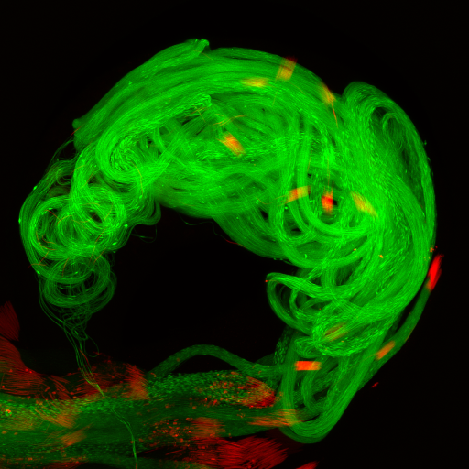What happens when you poke a cell?

Scientists from the Tata Institute of Fundamental Research provide the first ever description of the process of sperm release live in an animal using the fruit fly, Drosophila.
Dubey et al., in their manuscript published in the 12 September 2016 issue of the journal, Developmental Cell present the cellular description of sperm release in the testis of live Drosophila. This is the first time that such a process has been viedo-graphed in any animal species.
While investigating this process, they also discovered an unprecedented phenomenon of a cell reacting to the constant attempts of invasion by mature spermatids. They showed that the mature spermatids actively push into the neighbouring somatic cells during the final stages before exiting the testis. Each time, the cell mounts a local response and actively pushes the invading spermatids back. This phenomenon is driven by the local self-assembly of actin polymers and membrane dynamics.
The results may have wider implications in explaining how a eukaryotic cell may prevent potential physical invasion by microbes and other nanoparticles around it.
More information: Pankaj Dubey et al, Localized, Reactive F-Actin Dynamics Prevents Abnormal Somatic Cell Penetration by Mature Spermatids, Developmental Cell (2016). DOI: 10.1016/j.devcel.2016.07.001
Journal information: Developmental Cell
Provided by Tata Institute of Fundamental Research


















